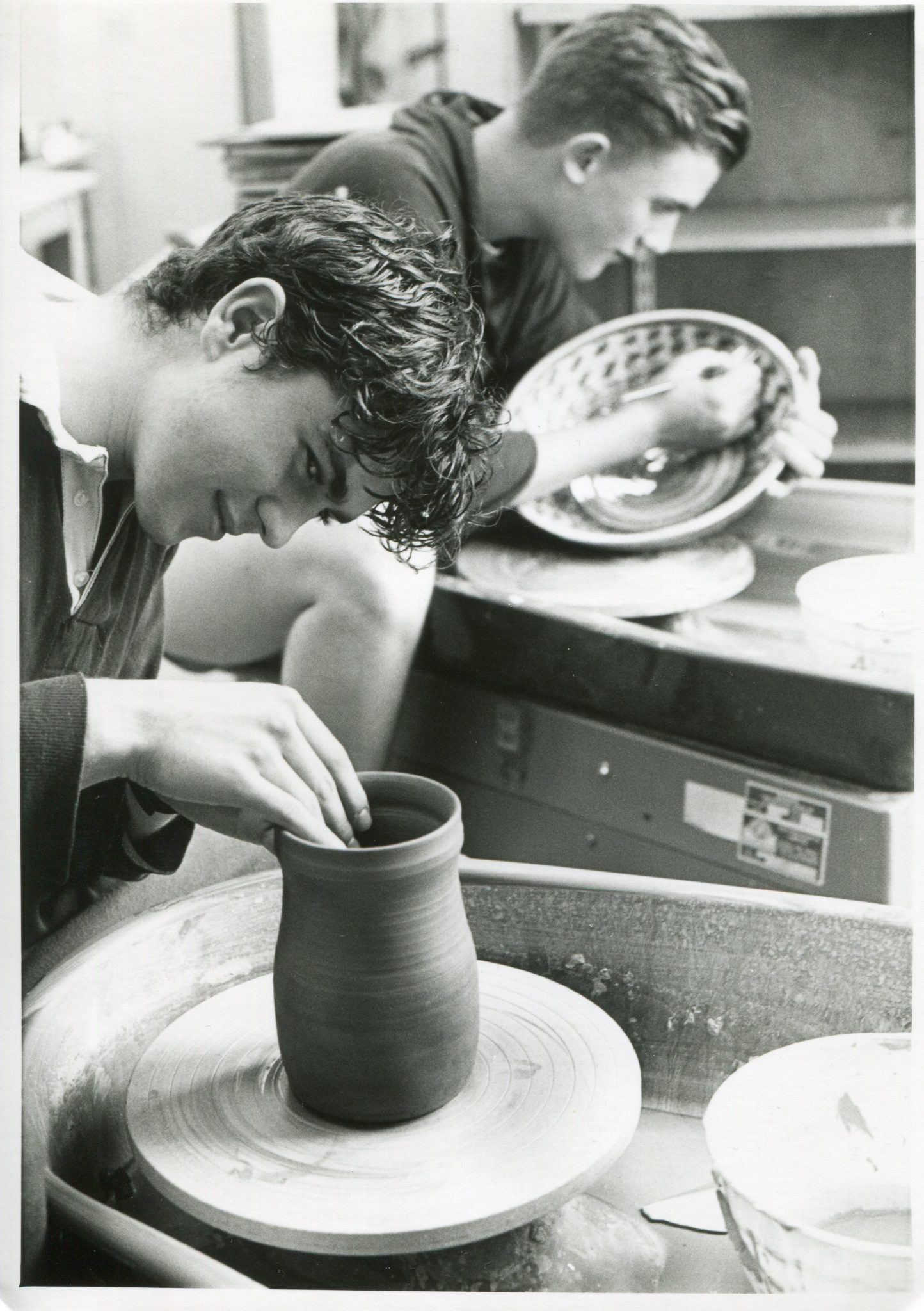Since the establishment of the Epsom College Art Department in 1858, the Arts have thrived as a creative outlet for students. Painting, pottery, textiles and stained glass have all found their places at Epsom. We are privileged that the department has been led by some great exponents of arts practice over the years. We are also fortunate that some well recognised artists were educated at the College.
Frederick Charles Cooper was the first Head of Art. He taught at Epsom from 1858 to 1896 and can be seen in the photograph seated; holding the tools of his trade.
Bernard Wallis, teacher of English and Classics, Housemaster of Holman for twenty years from 1929 and Second Master for seven years from 1949; a man of legend. Although he wasn’t directly teaching the subject he was a great promoter of the Arts. He was a skilled artist taking inspiration from architecture around him. In his obituary Headmaster Powell wrote: “His architectural sketches, generally so shyly hidden, almost took one’s breath away by their beauty.”
Trained at The Royal Academy School of Painting Denis Barnham joined the RAF at the outbreak of WWII and received his commission and ‘wings’ in Rhodesia before returning to England for training on Spitfires. He flew with distinction throughout the war. In 1945 Barnham resumed his life as an artist whilst concurrently running the Art Department from 1950 to 1970.
John Piper (Holman, 1919-1922), trained at The Royal College of Art and was the official war artist of WWII. He is known for his depictions of bombed buildings beautifully rendered in muted colours. His work in theatre and later in the craft of stained glass broadened his artistic development and popularity.
Graham Sutherland (Granville, 1918-1919), a graduate of Goldsmith’s College, was employed in WWII by the War Artists Advisory Committee to help make a comprehensive artistic record of the impact of war on Britain. His work extended from painting to pottery, glass wear to textiles and he designed the impressive tapestry for Coventry Cathedral when it was rebuilt after comprehensive bombing during the war.
John Milnes-Smith (Wilson, 1928-1931) originally trained as an architect at the Architectural Association. He served in Burma for three years. Post war he specialised in the field of preservation and conservation of historic buildings, whilst continuing his artistic career. He was part of the pre- Second World War generation who took part in the optimistic resurgence of British art in the 1950s. He took part in the pioneering exhibition ” British Abstract Art” which established the artistic genre of British Abstract Expressionism.
By College Archivist, Rebecca Jallot





